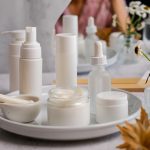Homeowners often face the inevitable need for repairs. While it might seem tempting to call a professional handyman for every issue, many common home repairs can be tackled with minimal tools and a bit of know-how, saving you a significant amount of money. DIY home repairs not only empower you to maintain your home efficiently but also enable you to make informed decisions when professional help is truly required.
Fixing a Leaky Faucet
A dripping faucet can be a significant annoyance and lead to higher water bills. Fortunately, fixing a leaky faucet is typically a straightforward task. The first step is to identify the type of faucet you have, such as a cartridge, ball type, or ceramic disk.
1. Turn off the water supply: Before you start, make sure to turn off the water supply under the sink to prevent any accidental flooding.
2. Disassemble the faucet: Remove the handle to access the inner parts. You may need an Allen wrench or screwdriver to do this, depending on the type of faucet.
3. Inspect and replace the damaged parts: Once disassembled, inspect parts like washers, O-rings, or seals. These components are often the culprits behind leaks. Replace them with new ones from a hardware store.
4. Reassemble the faucet: Put everything back together in reverse order and turn the water supply back on.
With minimal effort and cost, your leaky faucet issue should be resolved, reducing water waste and controlling your water bills.
Patching Up Drywall
Damaged drywall from accidental impacts or shifting foundations can be an eyesore. Repairing drywall is not as complex as it may seem and requires only basic tools.
1. Prepare the surface: Use a utility knife to cut out the damaged section of drywall. Try to create a clean, square opening for better patch placement.
2. Apply the patch: For small holes, adhesive-backed mesh patches work well. Simply place the patch over the hole and press it into place.
3. Apply joint compound: Use a putty knife to spread joint compound over the patch, feathering the edges to blend with the surrounding wall.
4. Sand and paint: Once the compound is dry, sand it smooth with sandpaper, wipe away dust, and repaint to match the surrounding area.
With the right materials, you can restore your wall’s appearance without the need for a professional.
Unclogging Drains
Clogged drains are a common household issue but are generally easy to fix without calling a plumber. Prioritize simple solutions before resorting to chemical drain cleaners.
1. Use a plunger: For sink or bathtub clogs, use a plunger to dislodge the obstruction. Make sure there’s enough water in the basin to cover the plunger’s cup, and use rapid up-and-down movements to create suction.
2. Try a drain snake: If the plunger doesn’t work, a drain snake is your next best bet. Push the snake into the drain until you feel resistance, then twist to break up the clog.
3. DIY drain solutions: Homemade mixtures such as baking soda and vinegar can effectively break down minor clogs. Pour half a cup of baking soda followed by half a cup of vinegar down the drain and let it fizz for about 15 minutes, then flush with hot water.
These methods can save you from expensive plumbing fees while keeping your pipes clear and functioning.
Fixing Stuck Windows
Windows that won’t budge can be frustrating, especially when you want to let fresh air in. Luckily, in many cases, windows stick due to minor issues that can be resolved easily.
1. Lubricate the tracks: If your windows are sliding types, clean the tracks to remove any dirt or debris. Then apply a silicone-based lubricant to the track for smoother operation.
2. Tighten or replace parts: For crank windows, check for loose or broken parts such as cranks, handles, or hinges. Tighten loose screws or replace parts using a screwdriver.
3. Check for paint buildup: Paint can sometimes glue windows shut. Use a utility knife to cut through the paint seal along the edges of the window.
Stuck windows don’t necessitate a complete overhaul; maintaining cleanliness and the mechanism will often do the trick.
Repairing Showerheads
A dripping or clogged showerhead can reduce water flow and lead to higher water bills. Fixing a showerhead is a quick job with immediate benefits.
1. Clean the showerhead: Remove the showerhead and submerge it in vinegar for a few hours to dissolve mineral buildup.
2. Check and replace washers: Worn-out washers can cause leaks. Inspect the washers inside the showerhead and replace them if required.
3. Reassemble and test: Reattach the showerhead, ensure a tight seal with thread tape, and test for leaks or improved water flow.
Regular maintenance can prolong the lifespan of your showerhead and save on potential replacements.
Sealing Drafty Windows and Doors
Drafts can significantly impact your home’s heating and cooling efficiency. Sealing them yourself can decrease your energy bills and increase comfort.
1. Identify drafts: Use a lit candle or incense stick to identify drafts around windows and doors. The flame or smoke should flicker near leaks.
2. Apply weatherstripping: Self-adhesive weatherstripping is effective for sealing gaps in doors and windows. Measure and cut strips to size before applying.
3. Use caulk: For non-movable areas where air leaks occur, such as between window frames and walls, apply caulk along the seams.
A well-sealed home provides comfort throughout the seasons and saves energy costs over time.
Replacing a Light Fixture
Updating a light fixture can change a room’s look and feel. It’s a task that may seem daunting, but with safety precautions, it can be quite manageable.
1. Turn off power: Ensure safety by switching the circuit off at the breaker box before beginning any electrical work.
2. Remove the old fixture: Unscrew the existing fixture and disconnect the wires. Note how the wires are connected to guide the installation of the new fixture.
3. Install the new fixture: Attach the new fixture according to the manufacturer’s instructions. Typically, this involves connecting the matching wires together using wire nuts.
4. Secure and test: Once the fixture is mounted, turn the power back on and test the light to ensure everything is working correctly.
Updating light fixtures yourself reduces electrician costs and can bring a refreshing change to your home’s interior.
Engaging in these simple DIY home repairs not only keeps your home in top condition but also enhances your understanding of how your home functions. The confidence gained from managing these tasks empowers you to tackle more complex repairs as time goes on, and the saving accumulated grows with each successful fix. Learning to fix these common household issues means you’re never at the mercy of costly handyman services for small, manageable tasks.



